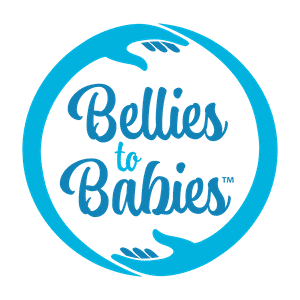Exploring Your Unborn Baby's Senses: How They Develop in your Uterus
The uterus is undisputedly the ultimate environment for the development and nurturing of your baby. The sensory systems develop throughout pregnancy and affect the brain’s development. The temperature in your uterus is always perfect, a temperature called "neutral warmth".
Touch
Your baby begins to develop on a sensory level from the moment of conception. It is very important in the overall development and coordination during intrauterine and postnatal life. Their touch receptors start developing at 12 weeks of gestation and by 14 weeks your baby has a functional tactile system. The areas of the fetus which are highly sensitive include the mouth and extremities; both are important in intrauterine well-being.
In utero, your baby is buoyed by amniotic fluid and whirls and flips freely in a contained liquid bubble. Since water decreases the weight of an object by 50 times, your baby has the wonderful sensation of being 1/50th lighter than on earth. They are lulled by the constant rocking and swaying motion of this gravity-reduced world, gently rocked to sleep. When the lulling movement stops – such as when you rest or lie down, your little one may become wakeful and busy.
Deep-pressure touch and the sense of warmth are the greatest inputs to the sense of touch. By the third trimester, your elastic uterus provides constant, deep pressure, like an all-day hug or massage (who doesn't like a hug or massage!?!). This tight hug keeps your baby curled up, with pressure on their back and hands towards the midline. In this position, your baby can suck their hands and their immature reflexes, which are starting to emerge in utero are contained so that they feel secure.
Hearing
The auditory system (hearing) is entirely intact by 20 weeks gestation but it will be a few weeks before the nerves conducting sound are functional. In your uterus, the overwhelming sounds (about 85 decibels) are the background sounds of your body.
Your baby hears the gushes of amniotic fluid and blood flowing in the veins and of course your heartbeat and digestion. These background noises contribute to the constant white noise they hear. The consistent sound of your heartbeat is a particularly soothing sound and babies who are played a beat at the pace of the average heartbeat (72 beats per minute) fall asleep easier and cry half a much after birth.
Sounds from the outside world are subdued (55 decibels) but the clearest sound they hear is your voice as it is carried not only outside the body but also through your bones in the form of vibrations. Your partner's voice is the second most familiar sound to your baby and it is nice to know that within hours of birth your baby will recognise them by their voice.
The sense of movement and gravity from the balance (vestibular) system in the ears develops very early and begins to function at five months gestation. As the sense of hearing and touch, the sense of movement is relatively advanced at birth. During the third trimester, your baby’s vestibular system has matured sufficiently to sense gravity and to turn to the appropriate ‘head down’ position in preparation for their birth.
Taste
Taste buds emerge at 8 weeks and by 16-18 weeks your baby has taste buds similar to yours. Anything you eat can flavour the amniotic fluid. While we are not exactly sure when the baby starts to perceive taste, during the second trimester, they will likely start sampling the flavour buffet in your amniotic fluid (possibly starting those hiccups we mention last week!). Babies prefer sweet tastes and withdraw from bitter tastes. Taste buds are very important in the initiation of a coordinated suck and swallow response used for feeding.
Smell
Smell develops alongside the sense of taste. Since smells are essentially chemicals that are found to be present in the amitotic fluid, it stands to reason that your baby can smell in utero as the chemicals pass from the amniotic fluid onto the smell receptors in the nasal cavity. It is very important in infant-mother bonding and also helps coordinate the proper functionality of other senses. The nasal cavity is protected by a plug of tissue until 28 weeks, but thereafter your baby will smell and respond to scents.
Vision
Vision is the last sensory system to develop and all visual structures and pathways are developed by 24 weeks of gestation. Your baby’s tiny eyelids open around 26 weeks and at 6 months babies can see light in utero. At 32 weeks gestation your baby can track a bright torchlight shone and moved across your pregnant belly.
Depending on factors such as the thickness of a persons tummy, her muscle, and her clothing, enough natural light may seep in during the final two months for your baby to see their hand and leg movements (WOW!).
Even though your baby is interested in and tracks a bright light, the reality is that they are rarely exposed to bright lights and there is very little visual stimulation in utero. In general, the womb world is visually muted and often it’s quite dark. There are no bright colours or contrasting shapes in utero on which your baby can hone his developing visual skills. For this reason, their visual system is relatively immature at birth.
Understanding all of their sensors are developed mostly by 40 weeks, you can help your baby transition to the outside world a lot easier.
Medical disclaimer: This page is for educational and informational purposes only and may not be construed as medical advice. The information is not intended to replace medical advice offered by physicians, osteopath, midwife, obstetrician, chiropractor or other qualified health care provider.

